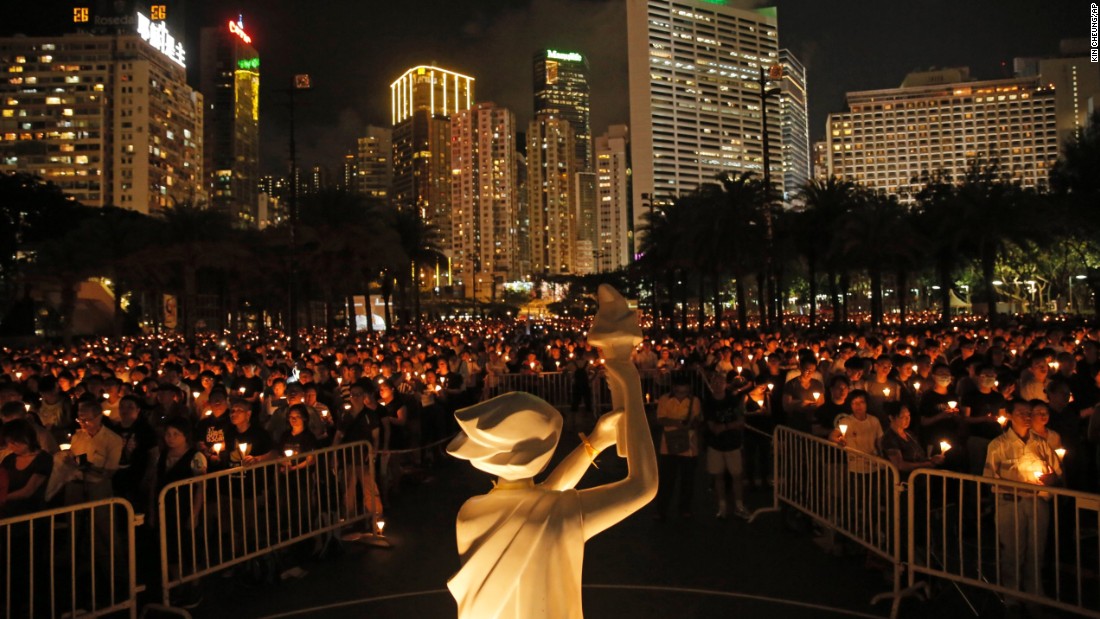The Tiananmen Massacre Is One of China's Most Censored Topics. Here's a Look at What Gets Banned
BY AMY GUNIA / HONG KONG 
More than 1,000 posts related to the Tiananmen Square Massacre that were removed from the Internet by Chinese censors were made public on Monday.
The database contains images of 1,056 posts that were deleted from Sina Weibo, a popular micro-blogging site with more than 400 million users, between 2012 and 2018.
Researchers at the University of Hong Kong collected the posts as part of a project called Weiboscope, which tracks censorship on several Chinese social media networks.
“Over the years we found Chinese netizens consistently continued to post about the Tiananmen Square crackdown in early June,” Dr. King-wa Fu, an associate professor at the University of Hong Kong, who leads the project, told TIME.
Nearly thirty years after the crackdown on student-led pro-democracy protesters in Beijing’s Tiananmen Square, it remains one of the most censored topics on the Chinese Internet.
“Over the years we found Chinese netizens consistently continued to post about the Tiananmen Square crackdown in early June,” Dr. King-wa Fu, an associate professor at the University of Hong Kong, who leads the project, told TIME.
Nearly thirty years after the crackdown on student-led pro-democracy protesters in Beijing’s Tiananmen Square, it remains one of the most censored topics on the Chinese Internet.
China’s censorship apparatus, dubbed the Great Firewall, and a army of censors thought to be in the millions, block all mentions of the event.
Related words and topics are also banned, and authorities have even blocked references to the date — June 4, 1989 — that Chinese tanks rolled into Beijing’s Tiananmen Squares and left what is believed to be thousands of protesters dead.
But Hong Kong, a semi-autonomous Chinese enclave, lies outside the Firewall, and researchers here were able to archive many posts before they were deleted.
Here’s a look at the photos the Chinese government does not want its people to see or share.
Re-enactments of the iconic ‘tank man’ photo
A photo of an anonymous man facing off to a row of tanks entering Tiananmen Square is one of the most well-known photos of event.
But Hong Kong, a semi-autonomous Chinese enclave, lies outside the Firewall, and researchers here were able to archive many posts before they were deleted.
Here’s a look at the photos the Chinese government does not want its people to see or share.
Re-enactments of the iconic ‘tank man’ photo
A photo of an anonymous man facing off to a row of tanks entering Tiananmen Square is one of the most well-known photos of event.
Authorities block any posts that look similar to that photo — even of a swan facing a semi-truck.
Hu Yaobang tributes
Protests in Tiananmen Square started in April 1989 when students gathered to mourn the death of Hu Yaobang — a former Communist Party General Secretary, who was popular with students for his ideas about political and economic reform but was forced to resign by the government.
Mentions of commemoration ceremonies
Each year in Hong Kong, tens of thousands of people gather to hold a candlelight vigil in remembrance of the event.
Photos of the ceremony have been widely censored, and even simple photos of candles posted around the date of the event are removed.

Any references to the date on which the massacre occurred
An image of a set of playing cards displaying what could be seen as the year, month and date of the event, and a screenshot of a calendar, attracted the attention of censors.

Other images can be seen on the project’s Instagram account, Pinterest and website.

Any references to the date on which the massacre occurred
An image of a set of playing cards displaying what could be seen as the year, month and date of the event, and a screenshot of a calendar, attracted the attention of censors.

Other images can be seen on the project’s Instagram account, Pinterest and website.
“I want the public to understand the extent [to which] people are trying to post, about what kind of message they want to send out,” said Fu.
:format(webp)/cdn.vox-cdn.com/assets/2721809/theverge1_640.jpg)

